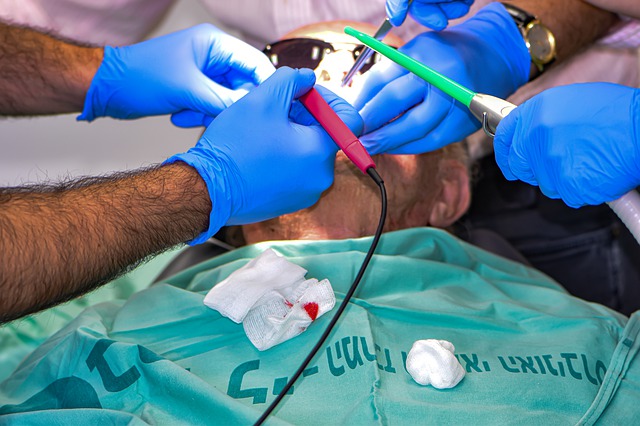An interesting article titled “What is the nocebo effect and does it apply to dentistry? A narrative review” written by T. Watanabe and et al. appears in the Journal of Oral Rehabilitation (2022). The article discusses the concept of a nocebo which is different than a placebo. A nocebo is where negative expectations lead to the effect of either clinical worsening, suboptimal treatment efficacy, or the occurrence of adverse events. A placebo on the other hand is where postive expectations leads to an effect that causes an improvement in symptoms. In the article the authors sought to explore the norcebo effect in dentistry which they say to date has been given very little attention which only a limited number of articles discussing it. The norcebo effect is real and has been demonstrated in numerous experimental and clinical settings, which hows that if a patient has negative expectations they sould not be ignored.
In the article, the authors performed a narative review in relation to dentistry by searchin Pubmed for terms like “nocebo”, “placebo”, “expectations” and “dentistry”. The authors say that no systematic reviews have looked at the norcebo effect in dentistry. However, they did find some single studies that suggest that a patient’s expectations can affect outcomes.
Several of those studies involved wisdom teeth extraction. In one example of such a study the authors point to, is that in clinical trials of drugs for pain relief for wisdom teeth surgery, patients who received a placebo instead of the actual drug, experienced drug-specific adverse events such as nausea, dizziness, and headache. Further, in a randomized double-blind study where patients were given naloxone or placebo after wisdom teeth removal, 61% of those who had a placebo had increased pain which was expected for those on naloxone. The authors felt that this study showed that when patients know about a potential increase in pain due to the drug this could cause a nocebo effect even though they were not given the drug. In another study, patients were randomly put into two groups: 1) the first was where clinicians believed the patients were given either placebo or naloxone, and 2) the second was where clinicians believed the patients were given placebo, naloxone, or fentanyl. In reality all patients received only placebo and it is noted that only fentanyl could help patients with pain relief. What happend in this study was that patients pain ratings were significantly higher in the first group than the second. The authors felt this suggested that clinicians expectations about the efficacy of treatment can influence patients treatment outcomes.

A few studies were outside of the area of wisdom teeth removal. In one such study exploring the safety and efficacy of hydrogen peroxide for tooth whitening, it showed that patients given placebo experienced hypersensitivity and gingival irritation. Further, patients who have a lot of dental anxiety end up experiencing higher levels of pain following tooth removal. A study of patients who needed emergency dental treatment showed that expected pain associated with actual pain experienced. A study of patients expectations about upcoming endodontic treatment, showed that patients expecting very good treatment outcomes were much less likely to experience pain 6 months later than those patients who were expecting a fair to good outcome.
The authors state:
“Although research on the nocebo effect in the dental field is limited, the available current evidence demonstrates that verbal suggestions, patient-clinician relationships, patients expectations and anxiety, are factors likely to play a role in dental practice…”
The authors feel that a systematic review of adverse events in placebo-treated patients in randomized dental trials could help show the role of the nocebo effect in dentistry. They also feel that experimental studies to investigate the influence of negative expectations on treatment efficacy, symptoms, and adverse events are needed. They are hopeful that this research can be used to beter undrstand the nocebo effect in dentistry and provide tips to help reduce it.
Even without these studies, the authors present in the article a situation common with wisdom teeth surgery where a patient comes in and is very anxious due to previous bad experiences with teeth removal. The dentist explains the surgery and tells the patient about how post-operative pain and discomfort is expected and to make sure the patient cancels their upcoming plans and has plenty of painkillers. The authors say that learning more about the nocebo effect could hlep dentists better reframe how to present this information to the patient in this scenario. They say this could cause them to withold some information, reframe it in a positive way, or even educate patients about the nocebo effect. It seems that witholding information to some patients could make them angry so reframing it in a positive way and education could be helpful. It will be interesting to see how the nocebo effect in dentistry works and is understood as more research in this area is conducted.
